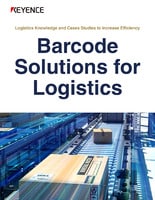Types of Logistics Centers
There are three types of logistics centers: transfer centers, distribution centers, and process distribution centers. You should have a good understanding of these three logistics centers because they are a basic part of logistics. In addition to the three types of centers, fulfillment centers also exist as centers for the mail order sales industry. This section describes the features and functions of each of these logistics centers.
Transfer Centers
The primary role of transfer centers is cross docking (e.g., sorting and transshipping goods). Transfer centers fundamentally do not perform storage of goods and other functions. Received goods are immediately sorted and shipped to the next destination. The work performed on cargo at transfer centers is less than that performed at distribution centers and processing distribution centers, so a feature of transfer centers is that they can be operated with devices and equipment on a relatively smaller scale. However, receiving means immediate shipping, so shipping information is required at the same time as receiving and speedy cooperation between receiving and shipping is indispensable.
Distribution Centers
The purpose of a distribution center is to store and manage inventory at a logistics center, sort those goods by store and region, and deliver those goods to retail stores and end users. This is the standard logistics center that everyone thinks of. The work at a transfer center is simple: receive and then immediately ship goods. A distribution center, however, is equipped with the basic functions of a logistics center, such as shipping work, picking according to the contents of an order, distribution processing such as inspections and packaging, and shipping so that goods arrive by the specified deadline. Compared to a transfer center, though, costs tend to increase because equipment is required on a larger scale.
Processing Distribution Centers
A processing distribution center is a distribution center with enhanced distribution processing. Relatively simple distribution processing is performed at a distribution center, such as packaging and applying labels, but the difference is that a processing distribution center can perform advanced distribution processing that requires specialized devices and equipment, such as processing fresh fish and meat, as well as assembling and installing parts. In addition to functioning as storage centers, these centers are equipped with an environment that is as close to a factory as possible. High distribution processing functions can increase added value, but this also requires dust-proof facilities, temperature-controlled facilities, and production lines and labor equal to that of a factory.
Fulfillment Centers
The popularization of sales over the internet has greatly changed the logistics industry, and fulfillment centers are attracting attention in this age. Fulfillment centers are logistics centers that perform management, picking, and delivery of goods in the mail-order industry. It can be said that these are logistics centers that perform the sales work of receiving orders from the end user and promptly shipping goods. The advantage is that all of the work (e.g., receiving goods, receiving orders from end users, packaging, shipping, inventory management, customer data management, handling returns, handling complaints, and payment process) is completed at the logistics center. Operators that conduct mail-order sales can enjoy benefits such as different customers and using new types of payment methods by conducting sales using the services of a fulfillment center.





